Introduction, Plan and Preparation
This is an account of our adventures in Peru from our trip in November 2007. It turned out to be an exciting trip for my five year old son and the trip was packed full of adventures and good times. We trekked through and across one of the world’s deepest canyons, climbed in the mountains up to 17,400 feet/5300 meters, and even experienced a volcanic eruption up close.
See also our three trip albums:
Trip Album #1
Trip Album #2
Trip Album #3
Trip Album #4
My son had been climbing several 14,000 feet/4200 meter mountains in the USA and with much preparation and excitement and drive, he was ready for something bigger. Peru was chosen because it is one of the few countries that I hadn’t been to in South America and plus things just worked out that way. We had also thought about climbing Maipo or El Plomo on the Chile/Argentina border, but when it came down to it, Peru was chosen in the end.
Since this was a long trip to high altitudes and with just my son and me, for safety reasons we needed a bit of help and another adult along so we contacted Carlos Zarate in Arequipa. One of my friends climbed Ampato with Carlos back in 1972 when he was only 14 years old. Now 35 years later Carlos helps travellers with their climbs via his company in Peru. It was a light guided trip so Zarate would help with the mules, cook for dinners, etc, but we would get to choose the itinerary and ride public transport and provide all our own gear, lunches, etc.
Day 1, November 11
After flying all night and spending some time to sleep at various airports, we finally arrived in Arequipa. We took a taxi downtown and found a cheap hostel and took a look around.
We had hoped to go river rafting today and I had spoke at length with a company that sold trips for rafting on the Chila River. I was assured that the section of river we were doing was easy, but when we arrived at the river rafting office we found out that the river is actually class IV and too rough for my son. Apparently there was a miscommunication and the person selling us the trip (who was just a sub rather than from the company itself) didn’t understand that the river was rough? Anyway, it was really disappointing for Kessler as he had taken many swimming lessons and we had taken his life jacket to Peru for this special purpose and he really wanted to go rafting.
We spent the rest of the days around Arequipa walking around and admiring the views of all the 5500-6000 meter peaks (18,000-20,000 feet). We also dropped in to talk to Carlos Zarate. He was surprised that my son was so young but I assured him that he was well trained and could probably complete the planned treks and that since it would be only us and the guide/cook we could simply turn back or change plans as we went along.
![Chachani rises above Arequipa]() Chachani rises above Arequipa.
Chachani rises above Arequipa.November 12, Day 2
Very early in the morning, we were off to the Colca Canyon and Cabanaconde by public bus! The Colca Canyon is one of the two deepest canyons in the Western Hemisphere and is 3500 meters (11,500 feet) deep and filled with both ancient ruins and many interesting cultures that live in the bottom of the canyon. No roads penetrate the canyon’s hinterlands, but many people live there in small villages.
It was a long and scenic bus ride that went up to 4900 meters/16075 feet. We walked around Cabanaconde in the afternoon and ended up seeing one condor.
![Near Cabanaconde]() Kessler near Cabanaconde near the rim of the Colca Canyon on day 1 of our trek. Colca Canyon is one of the deepest canyons in the world.
Kessler near Cabanaconde near the rim of the Colca Canyon on day 1 of our trek. Colca Canyon is one of the deepest canyons in the world.November 13, Day 3
Today we hiked to the bottom of the Colca Canyon. It was a long haul for Kessler and his little legs, but he did fine and everyone was surprised to see him down there. We passed an interesting geyser along the river before crossing the bridge and up a hill before dropping to the village of Llauar. There were some really nice hot springs in the tiny village and we set up the tent right next to them. It was a beautiful spot. Two condors were seen today.
![Llauar]() This is the oasis of Llauar. It's a long, dry and dusty hike down to the bottom of the Colca Canyon, but the village is a welcome site. The area is very dry and a desert, but the village of Llauar is a green oasis in the desert. No roads have reached the villages yet, so the Colca Canyon provides Nepal style trekking.
This is the oasis of Llauar. It's a long, dry and dusty hike down to the bottom of the Colca Canyon, but the village is a welcome site. The area is very dry and a desert, but the village of Llauar is a green oasis in the desert. No roads have reached the villages yet, so the Colca Canyon provides Nepal style trekking.November 14, Day 4
Today was spent hiking to the village of Sangalle up river and in the bottom of the Colca. There was 700 meters of really stiff climbing that tested us all in the desert heat. We passed a few isolated villages along the way and the area reminded me much of trekking in Nepal.
![Colca Canyon]() This photo was taken in the Colca Canyon; on of the deepest canyons in the world. This photo was taken above the village of Sangalle.
This photo was taken in the Colca Canyon; on of the deepest canyons in the world. This photo was taken above the village of Sangalle.
Sangalle was a real paradise with waterfalls, springs, pools, palm trees, and lots of greenery. Everyone was really surprised and happy to see Kessler and gave him lots of attention as if he were a celebrity. Kessler found a girlfriend in the village and they played for hours while I helped a sick hiker from the states and chatted.
![Sangalle]() Kessler meets a friend at the bottom of the Colca Canyon.
Kessler meets a friend at the bottom of the Colca Canyon.November 15, Day 5
Today we took the long, hot and dusty trek back up to Cabanaconde. Everyone was so impressed with Kessler that he got quite the ovation at the top since he had walked the entire way. It was a good hike and the first of our three treks/climbs of the trip.
![Steep trail to Cabanaconde]() This is the steep trail that exits the Colca Canyon between Sangalle and Cabanaconde.
This is the steep trail that exits the Colca Canyon between Sangalle and Cabanaconde.November 16, Day 6
Today was the beginning of the tougher Cabanaconde to Andagua trek. We caught a supply truck to Llanca which is known as the "change of slope". Besides foot travel, this supply truck is currently the only transport as there are no buses and the supply truck only goes a few days a week. After dropping us off in the middle of nowhere in the desert, we began to pack up all our gear.
While we were out in the middle of the desert, the Peruvian Army came by. They were mighty curious what a five year old "gringo" was doing out in the middle of nowhere in a remote corner of Peru.
They were quite amused by Kessler and gave us a ride down to the Colca River, which saved us a long dusty part of the trek. They even gave Kessler some of their candy rations!
![Peruvian Army with Kessler]() We were out in the middle of the desert when the Peruvian Army came by. They were mighty curious what a five year old "gringo" was doing out in the middle of no where in a remote corner of Peru.
We were out in the middle of the desert when the Peruvian Army came by. They were mighty curious what a five year old "gringo" was doing out in the middle of no where in a remote corner of Peru.
We spend the rest of the day hiking to the village of Choco. It was a long uphill trek, but we made it in pretty good time.
![Colca Canyon]() Trekking through the Colca to the village of Choco
Trekking through the Colca to the village of Choco
Kessler said he was very tired, but then all the children from the village were excited to see Kessler and all ran out to meet him. Apparently he was the only gringo kid ever to visit this and the remaining villages on the trek. I guess Kessler forgot all about being tired and all the kids spent the evening playing fútbol until it got dark. The children were impressed and curious of our freeze dried ice cream bars that we brought from the US, so we shared them.
![Choco]() Kessler plays futbol in Choco.
Kessler plays futbol in Choco.November 17, Day 7
Today we made the trek to Miña 3550meters/11,650 feet, a remote gold mining village high in the mountains where gringos seldom visit. We passed through a very impressive gorge and some really great scenery including several ruins of pre-Inca terracing. Kessler was talked into riding the mule part of the time so we could make better time, but after he tried it, he enjoyed it. He still walked most of the way though. It began to rain and we set up camp in an old abandoned church high above the village.
![Rio Chalza Gorge]() This is Kessler in the Rio Chalza Gorge on day two of the Colca to Andagua Trek.
This is Kessler in the Rio Chalza Gorge on day two of the Colca to Andagua Trek.November 18, Day 8
Today was perhaps the toughest day of all. We were to climb over two passes, one of them 5300 meters (17,000 feet high). We began to have more and more extensive views as we climbed out of the confines of the huge canyon system. We began to take on the depth of the landscape as the height of many sky scraping mountains became apparent. We were surrounded by big mountains and had some really far reaching views all the way to the snowcapped volcanoes of Hualca Hualca, Ampato and Sabancaya. Kessler pointed out several mountains that he wanted to climb “when he was nine years old”. Several condors were also seen and they provided some entertainment.
Crossing the first pass was rather long and tedious, but the views made the climb worth it. We had good weather until crossing the pass at 4600 meters (15,100 feet) and to the Rio Achacota. We had a most pleasant lunch in this beautiful area, but the sky began to get dark and cloudy.
![Bad weather]() Bad weather just east of Cerani. The weather really turned foul so we only got to Paso Cerani rather than the summit of Cerro Cerani.
Bad weather just east of Cerani. The weather really turned foul so we only got to Paso Cerani rather than the summit of Cerro Cerani.
As we begun our climb up to Paso Cerani, the weather got worse and worse until we were in a full blown blizzard and now that the weather had taken a turn for the worse, we had to hurry at times so we could make it over Paso Cerani before snow piled up and made travel difficult. The mountains took on a dark and menacing appearance and became steeper and more jagged towards the pass until they became almost mystical and blending in with the mist and snow. It was a long and hard climb (because of the weather) to Paso Cerani at 5300 meters/17,400 feet. I had really wanted to take a crack at the summit of Cerro Cerani, but there was no chance of reaching that summit now. We only took a very short break at the pass and dropped down the other side. Kessler had to walk the entire way in the rain and snow because the trail was so steep, but he didn’t do any complaining. It was just another day in the high mountains for him.
![Cerani]() Five year old Kessler at 5300 meters/17400 feet on Cerani in Peru.
Five year old Kessler at 5300 meters/17400 feet on Cerani in Peru.
In the mist, fog and snow, we could still see many jagged peaks plus several bunches of weird carpet like plants. Finally we passed through a herd of llamas where a shepherd was camped with a boy, maybe ten years old.
![Matching plant]() This cusion plant is known as Yareta,and it matches Kessler's coat quite well. The plants are located on either side of Cerani. This one is just below the pass on the west side.
This cusion plant is known as Yareta,and it matches Kessler's coat quite well. The plants are located on either side of Cerani. This one is just below the pass on the west side.
We quickly set up camp in the valley Quebrada Cerani after our longest day. It was a day to be proud of and Kessler was very proud that he had broken his mother’s and grandfather’s high altitude records. In the bad weather he had ridden the mule for a very few sections so we could move faster, but for the vast majority of the way he had walked so it was an accomplishment to be proud of.
![Llamas and Cerro Cerani]() Cerro Cerani is to the right and in the clouds. This is as viewed from 4550 meters at the Quebrada Cerani.
Cerro Cerani is to the right and in the clouds. This is as viewed from 4550 meters at the Quebrada Cerani.
Note: It is apparent that Kessler is a superb acclimatizer. At high altitude, his blood oxygen saturation level has been reading higher than mine. Not sure why, but he seems to acclimatize better than some adults, including myself. He had no headaches at all. His blood oxygen level was 88% at 5000 meters (16,400 feet). At the slightest sign of any altitude sickness (or any low blood oxygen readings) we planned to turn back, so anyone taking children to high altitudes must moniter them closely.
November 19, Day 9
The day started warm and sunny and the views were really nice, especially with a fresh coat of snow on the mountaind. We trekked mostly down hill (and it was a long way down!) to the village of Chachas. There were many fine views of the towering giants of the Andes including some great views of Chila, Casiri and Coropuna and Kessler picked out many more mountains he wants to climb "when he is nine".
![Chila Group]() These are some of the nevados in the Chila Group of peaks as viewed from the route to Chachas and below Paso Cerani.
These are some of the nevados in the Chila Group of peaks as viewed from the route to Chachas and below Paso Cerani.
The land got warmer and more desert like as we dropped in elevation until we were in groves of cactus. Kessler rode the mule for a short distance for fun, but usually it was too steep to do so. After hiking a few hours in the rain, we arrived at Chachas early enough for a long leisurely lunch before catching a small bus to the hamlet of Andagua tucked away in a remote part of the Andes where we spent the night. It was a great and challenging trek with some fine scenery, nice mountains, and some nice people and villages. It was all a great experience for both father and son. Kessler and I spent the evening in Andagua wandering around until just after dark and looking at the Plaza de Armas and some interesting street decorated art carved into the cobbles on the street that lead to the bull ring. The bushes in the plaza were carved into all kinds of interesting shapes and the children and adults of the tiny town were very friendly and interested in Kessler and all wanted to say hi. He got rather embarrassed when all the older ladies wanted to kiss him on the cheek. As towns go, Andagua is as quiet as they come, but a nice place to relax.
![Andagua]() This is the trailhead at Andagua. It's a nice, but off the beaten track village.
This is the trailhead at Andagua. It's a nice, but off the beaten track village.November 20, Day 10
What few buses pass through Andagua do so at night, so were stuck having to spend the entire day there. What to do for a rest day after completing a long trek? Why, climb more mountains of course. There were two small volcanoes north of town that just had to be climbed. Especially when compared with the nearby giants of the Andes which rise 5500-6425 meters, the two volcanoes of Cerro Yanamauras is a hill, but they are still worthwhile climbs, especially for a rest day.
There are actually two volcanoes next to each other here. Cerro Yanamauras is the name of the higher of the two volcanoes on the topographic maps, but for some reason some of the locals know the two peaks as the very gringo sounding “Chip” and “Johnson”, though I don’t have any idea where the names came from. Johnson is the higher of the two twins and to the northwest while Chip is to the southeast.
We walked across the farmlands and climbed “Chip” first. There were some great views of the higher and more rugged mountains from the summit as well as views of the towns of Andagua and Chachas. Kessler still hadn’t had enough of climbing peaks yet, so insisted that we also climb “Johnson”.
![The Summit of Chip]() This is the summit of the "Chip" volcano.
This is the summit of the "Chip" volcano.
These volcanoes are new and interesting and sit in what is known as the Valle de los Volcanes and has many small cones all neatly arranged. The valley floor is lined up with about 80 volcanoes all along the same fissure and all around 100-300 meters above the valley floor. The volcanoes are only a few thousand or even only a few hundred years old. It was an interesting place to visit.
![Approaching the Summit of Chip]() Kessler approaching the summit of "Chip" from the south. The summit of the volcano is marked with a cross.
Kessler approaching the summit of "Chip" from the south. The summit of the volcano is marked with a cross.
The night was spent on a long, cold (the bus supposedly goes up to 5500 meters [18,000 feet]) and bumpy bus ride back to Arequipa. The bus ride lasted ten hours and we arrived in Arequipa at 4 am. Kessler’s little body had a much easier time finding comfort on the bus and for a good sleep. I had a hard time sleeping at all on the rattle trap bus.
November 21, Day 11
On this day, we just took on the city sites, including all the famous sites and of course Juanita and other mummies. Kessler had wanted to see the mummies for a long time and he still talks about it often. There is something about real mummies that children really are interested in for some reason.
November 22-23, Days 12-13 (THE BIG BANG!)
Very early in the morning on November 22 we two people from Zarate and Kessler puls myself piled into a Landcruiser for our long drive to the remote volcano of Ubinas.
Due to an eruption on our planned summit day of Ubinas, we never did reach the summit of this volcano, but we were only 500 meters from the crater rim when the volcano erupted. Here is an except that I wrote the day of our retreat.
We´re back from Ubinas. We only made basecamp. Last night was about the longest night of my life. No sleep.
Anyway, we made basecamp at around 2pm in a raging snowstorm with thunder. It was snowing hard, sometimes in blizzard conditions so we just had to sit in the tent the whole time. Had to shake the tent off several times to shed the snow. It finally stopped snowing at 11pm under a star filled sky.
More "thunder" at 2 am. It was noticed that there was a layer of dirt over the snow around the tent. I thought the wind must have blown it there since it was strong at times. More thunder and a strong smell at 2:30 am that made us all sick. It finally occurred to me what was going on. I don´t know why it didn´t dawn on me before until the smell hit us. This was neither thunder nor blowing dirt. The volcano was erupting. Ash was falling from the sky. The fumes made us all sick and Kessler vomited several times. I went outside to find a layer of ash over everything including the new snow. It was definitely falling from the sky. It stung the eyes and filled nostrils, ears, etc. Unfortunately, there was nothing we could do. The way off the mountain couldn´t be found in the dark with all the new snow and new ash all over. I heard the truck have trouble starting and then it was parked a bit downhill. We had to wait until it got light. Luckily it begins to get light at 4:30. We secured every nook in the tent as good as we could to keep the ash out.
![Too close for comfort]() We were camped on Ubinas 500 meters/1600 feet below the crater rim. Early in the morning the mountain exploded. Notice how close we were and the ash falling from the sky.
We were camped on Ubinas 500 meters/1600 feet below the crater rim. Early in the morning the mountain exploded. Notice how close we were and the ash falling from the sky.
As soon as it began to get light we began to pack up to get the (fill in the blank) out of there. Kessler was still sick and I covered him with everything I could to filter out any ash and fumes.
![Time to get the ____ out of here!]() Our attempt on Ubinas ends with an eruption in the morning and a hurried exit and packing up. Notice the ash covered vehicle and the erupting volcano.
Our attempt on Ubinas ends with an eruption in the morning and a hurried exit and packing up. Notice the ash covered vehicle and the erupting volcano.
Like everything else, the truck was covered with ash. We haphazardly threw everything in (including Kessler whom I hurried and carried) and got out of there. As we were leaving we saw the eruption from a safe distance.
![From a safe distance]() We watched the rest of the eruption of Ubinas from a safe distance. This is on the drive out.
We watched the rest of the eruption of Ubinas from a safe distance. This is on the drive out.
There were still some positive things about this long and no fun night. I guess we have to look at the bright side.
1. Other than getting sick from the fumes, no one got injured in any way nor were there any other mishaps.
2. While packing up, I still managed to shoot the whole thing on film (still camera). We should have some amazing photos as we were only 500 meters (1600 feet) below the crater rim. We got photos of the ash covered tents and truck with the exploding volcano behind. We were very close to the eruption. Since the sun wasn´t up yet, they will be only fair to good quality, but I was going to hang around for better lighting. I also got several good photos with good lighting from a distance.
3. Kessler is going to have one heck of a story to tell to his kindergarten class. Probably to his children and grand children as well.
November 24, Day 14
Today was just spent seeing the city sites, but that’s another story. It was our last day on our grand adventures in Peru. It was a great father son experience that will never be forgotten. Kessler still talks about and wants to move to Peru someday. I don’t think his mother will go for it.




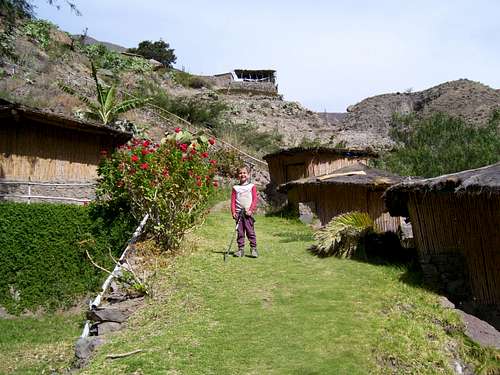
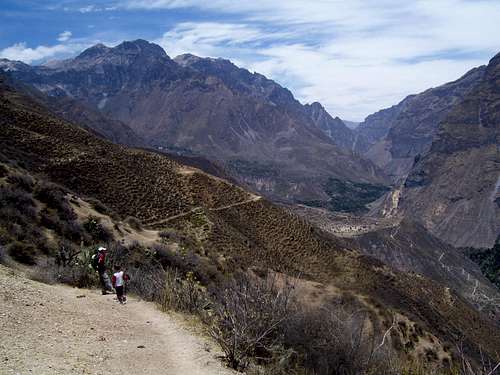


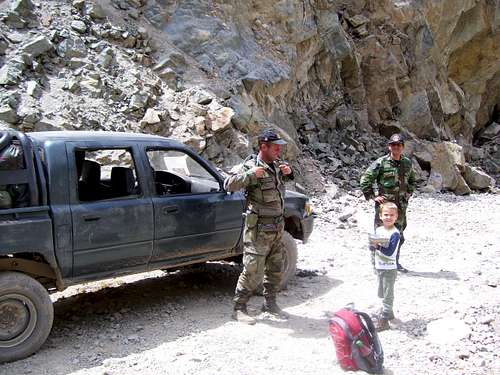

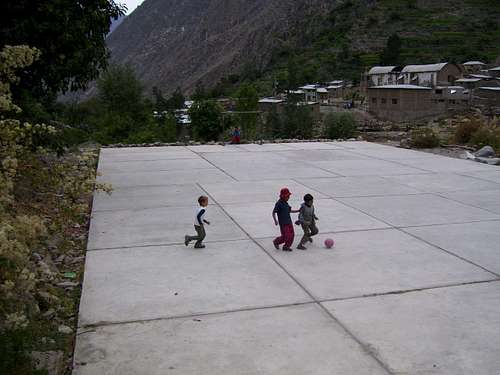


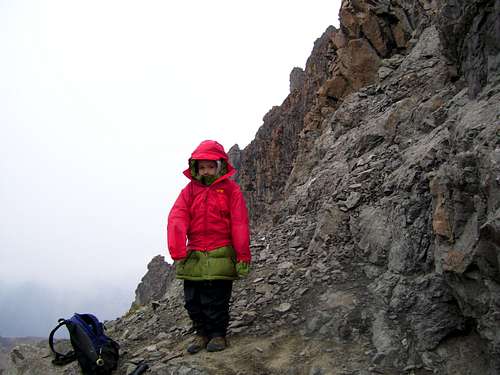
























Comments
Post a Comment